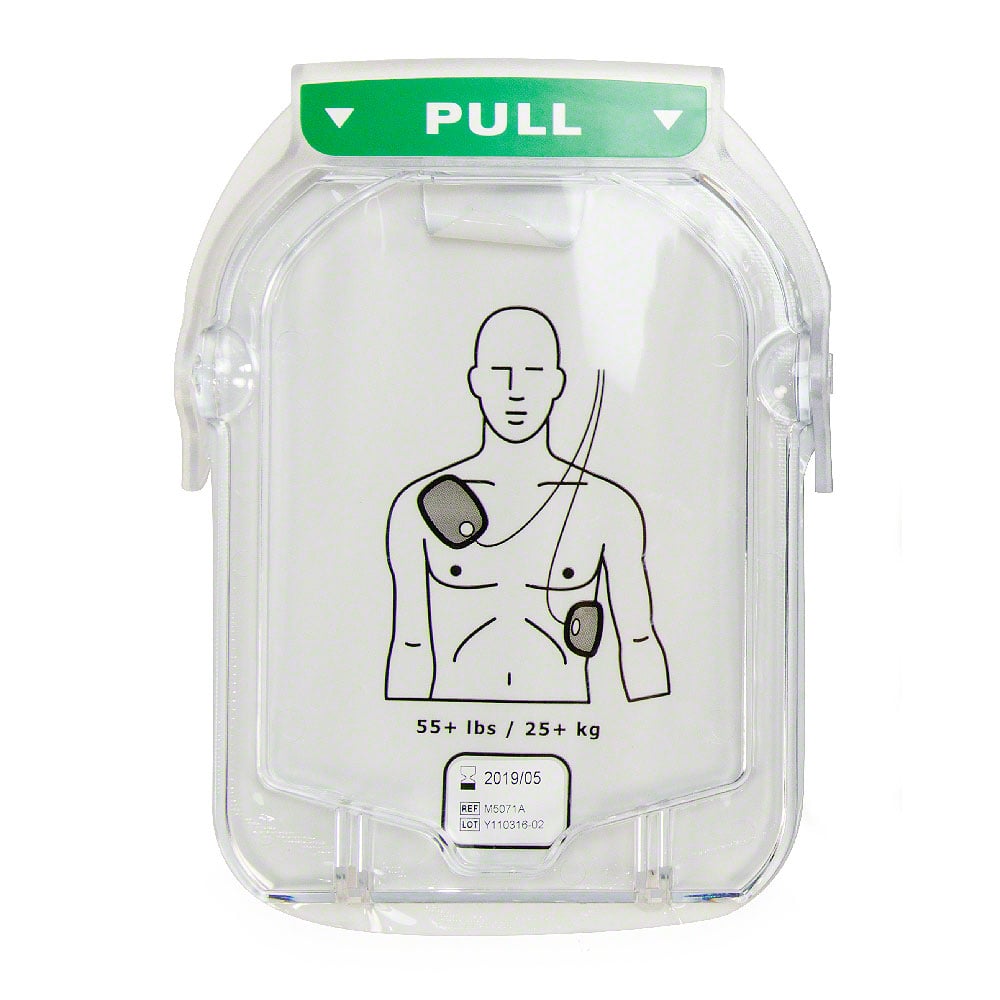In a world where every second counts during a medical emergency, having an Automated External Defibrillator (AED) readily available can be the difference between life and death. These life-saving devices are designed to restore a normal heart rhythm, but their effectiveness hinges on one crucial aspect: fully functional batteries.
Understanding AED battery types and their specifications is vital for ensuring that these devices work when needed most. With different models having varying lifespans and maintenance requirements, being aware of battery functionality is key to reliable emergency preparedness.
This article delves into the significance of regularly replacing AED batteries, explores what’s included in replacement kits, and addresses common concerns regarding maintenance. By the end, you’ll have a comprehensive understanding of how to enhance emergency readiness through proper AED care.
The importance of AEDs in emergency situations

Automated External Defibrillators (AEDs) are life-saving devices used during cardiac emergencies. They deliver an electric shock to the heart when it stops beating effectively. This helps restore a normal rhythm.
AEDs are designed to be easy for anyone to use, even without medical training. A strong feature of AEDs is their clear voice prompts, which guide users through each step.
One critical component of AEDs is their batteries. Reliable batteries, like the 10-Pack Non-Rechargeable CR123A Lithium Batteries, ensure the device is ready when needed.
Here’s a quick look at some AED battery essentials
|
Feature |
Details |
|---|---|
|
Type |
Lithium batteries |
|
Standby life |
Long shelf life helps equipment stay ready |
|
Replacement |
Easy to change when needed |
AEDs are found in many public places, such as airports, schools, and gyms. This widespread availability increases the chances of survival in emergencies.
Keep AEDs regularly checked and maintained by replacing batteries before their expiration dates. Ensure active battery indicators are functioning to guarantee readiness.
In summary, having AEDs accessible and in working order can help save lives during emergencies. Always prioritize regular maintenance!
Understanding AED batteries
Automated External Defibrillators (AEDs) are essential in emergency medical situations, and their batteries are a crucial component. These batteries power the AEDs to deliver lifesaving shocks to individuals experiencing cardiac arrest. Proper maintenance and understanding of AED batteries ensure the devices are always ready to use. This guarantees that when minutes count, the AED won't fail due to a dead battery.
Types of AED batteries
There are various types of AED batteries available, each designed for specific models. Generally, AED batteries are lithium-based, known for their reliability and long shelf life. For instance, the Zoll AED Plus uses lithium batteries, which are popular for their steady performance. Heartsine Samaritan models also require specific battery packs. These batteries are often lightweight and easy to install. The Defibtech Lifeline AED uses a different type of battery, so it’s important to check battery compatibility before purchasing replacements.
Specifications and lifespan of different models
Different AEDs come with varied battery specifications. Here's a brief overview:
|
Model |
Battery type |
Standby life |
replacement |
|---|---|---|---|
|
Lithium |
5 years |
Easy |
|
|
Special Pack |
3-4 years |
Moderate |
|
|
Lithium |
4-5 years |
Simple |
AED batteries often have a lifespan ranging from 3 to 5 years in standby mode. It’s essential to track the expiration dates and plan for replacements. Some AEDs feature active battery indicators or status indicators, alerting you when it’s time for a change. Purchase replacement battery packs from authorized distributors to ensure authenticity and quality. Regularly check battery compartments and use a battery bank or chargers, if needed, to keep batteries at full capacity. This will ensure your AED is always ready for use in critical moments.
The role of battery functionality in AED performance

Automated External Defibrillators (AEDs) rely heavily on battery functionality for optimal performance. AED batteries come in various types, including lithium and 9-volt, each with specific shelf life and expiration dates. For instance, the Defibtech Lifeline AED uses a dual battery system with a standby life that ensures readiness.
Proper battery management is crucial. AEDs like the ZOLL AED Plus and Heartsine Samaritan have status indicators and active battery indicators to show battery health. Regularly checking these indicators and replacing batteries as needed is essential.
In summary, maintaining battery functionality is vital for AED readiness, ensuring they perform effectively when needed.
Common concerns about AED maintenance
Regular maintenance is key to ensuring your AED device works correctly during emergencies. Many worry about how to maintain these life-saving devices. Here are some common concerns:
- Battery and pad checks: It's crucial to inspect both batteries and pads. They should always be ready for use.
- Status Indicators: Keep an eye on the device's status indicators. They offer helpful cues about any issues.
- Scheduled Checks: Set up a weekly or monthly check to avoid unexpected malfunctions.
Identifying when to replace AED batteries
Knowing when to replace your AED batteries can save lives. Here are a few signs:
- Low battery alert: Most AEDs have a beep or light that indicates a low battery.
- Stand-by mode indicator: Check if the AED stays in standby mode too often.
- Expiration dates: Always replace batteries before their expiration date for reliability.
Questions about battery compatibility
Using the correct battery for your AED is vital. Keep these points in mind:
- Model-specific requirements: Different AED models, like Zoll AED Plus or Heartsine Samaritan, need specific batteries.
- Authorized distributors: Always buy from authorized distributors to ensure compatibility.
- Consult user manual: Your device's manual will have details on compatible battery models and specifications.
Understanding battery expiration dates
Expiration dates are crucial for AED battery effectiveness. Here's what you need to know:
- Shelf life: Lithium batteries have a long shelf life but must be replaced on time.
- Storage conditions: Store batteries in a cool, dry place to extend their standby life.
- Regular checks: Regularly verify the expiration date and replace batteries as needed. This ensures your AED functions when required.
Additional accessories for AED maintenance
Proper maintenance is crucial for the effective use of Automated External Defibrillators (AEDs). Having the right accessories ensures your AED is always ready for use. Here are some essential items:
- Batteries and battery packs: Regularly check the AED battery compartment. Zoll AED and Defibtech Lifeline AED batteries offer long stand-by life. Consider replacement battery packs from authorized distributors to ensure quality.
- Pads and electrodes: Pads, such as the ZOLL AED Pads, need routine checks for expiration dates. Always have extras on hand to replace expired ones.
- Battery chargers and indicators: For devices with rechargeable options, use the correct battery chargers. Keep an eye on active battery indicators to prevent unexpected failures.
- Storage solutions: Proper storage such as wall cabinets and battery banks helps keep your device accessible and protected.
|
Accessory type |
Purpose |
|---|---|
|
Ensure power reliability |
|
|
Pads and electrodes |
Necessary for AED operation |
|
Chargers and indicators |
Maintain battery performance |
|
Storage solutions |
Secure and quick access to the AED |
Regular checks and replacements maximize the effectiveness of your AED. Stay prepared by maintaining an updated list of necessary accessories.
Training supplies for effective emergency response

Training supplies are crucial for honing skills in emergency response. These tools ensure responders are well-prepared for real-life situations.
Essential training supplies
- CPR manikins: They offer hands-on practice for life-saving techniques.
- AED trainers: Mimic real AEDs, teaching how to operate models like the ZOLL AED and Defibtech Lifeline.
- First aid kits: Equip responders with bandages and essential tools for in-field practice.
- Realistic scenarios: Use fake wounds and blood to simulate actual emergencies.
Benefits of training supplies
- Confidence: Gain familiarity with equipment like AED trainers and CPR manikins.
- Skill mastery: Regular practice improves proficiency.
Considerations:
- Ensure tools like AED trainers have up-to-date software.
- Maintain cleanliness and functionality of training supplies.
In summary, investing in quality training supplies boosts the efficacy and confidence of emergency responders, making them better equipped when real incidents occur. This ensures that when the time comes, they can act swiftly and surely.
Establishing a regular maintenance schedule
Establishing a regular maintenance schedule for your AED is crucial. This ensures that the device is always ready during an emergency. Regular checks prevent potential failures and keep the unit in optimal condition. Here’s a simple guide to help you get started:
Monthly checks
- Battery status: Inspect the active battery indicators. Confirm that batteries are fully charged.
- Pads inspection: Check ZOLL AED Pads & batteries for signs of wear.
- Expiration dates: Verify shelf life of AED batteries and pads to ensure they have not expired.
Every 6 months
- Replacement batteries: Consider whether it’s time to replace your current batteries. Check authorized distributors for original replacements.
- Defibtech Lifeline AED: Assess the dual battery system if applicable.
- Battery compartment: Check for signs of corrosion or damage.
Annually
- Full system test: Conduct a thorough test of the entire AED.
- Documentation: Log all maintenance activities, expiration checks, and any replacements.
Incorporating these steps into your routine ensures that your AED remains reliable and ready. Keep a list of all maintenance actions with their completion dates to streamline the process. By following this schedule, you can extend the stand-by mode and effectiveness of your AED.
Conclusion
Proper AED care is crucial for emergency readiness. Ensuring your AED's batteries are in top condition is essential. Here's how to maintain them effectively:
- Regular checks: Monitor the AED's battery status indicators. Check for any warning lights that may suggest battery issues.
- Timely replacements: Replace batteries before their expiration dates. Know the shelf life of your AED's batteries, such as Defibtech Lifeline AED battery or dual battery systems.
- Use authorized distributors: Always purchase replacement batteries from authorized distributors. This ensures you are getting genuine and reliable products.
- Storage and standby: Store batteries according to guidelines. Keep the AED in stand-by mode to maximize battery life when not in active use.
- Backup supply: Keep a battery bank or a 12-pack of non-rechargeable CR123A lithium batteries on hand for emergencies.
Well-maintained AEDs, like the ZOLL AED Plus, save lives. Ensure readiness by adhering to these practices. Regular battery care not only extends standby life but also ensures that your AED is ready to work when needed.






